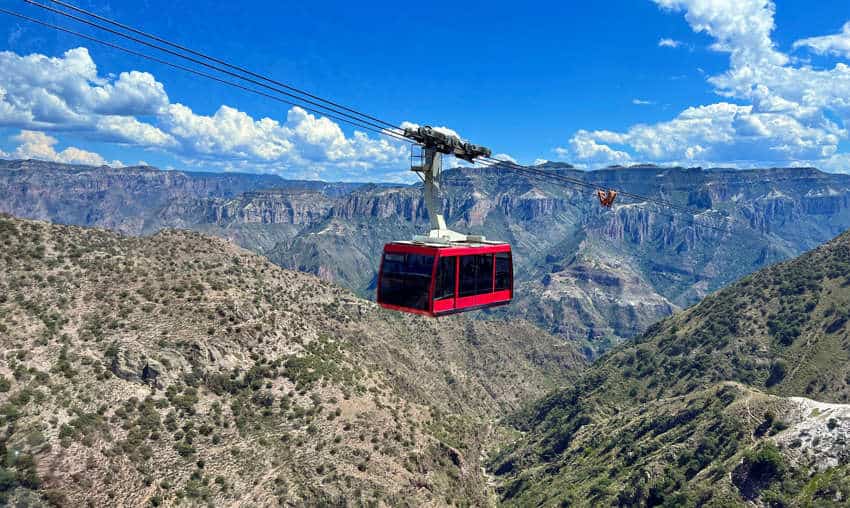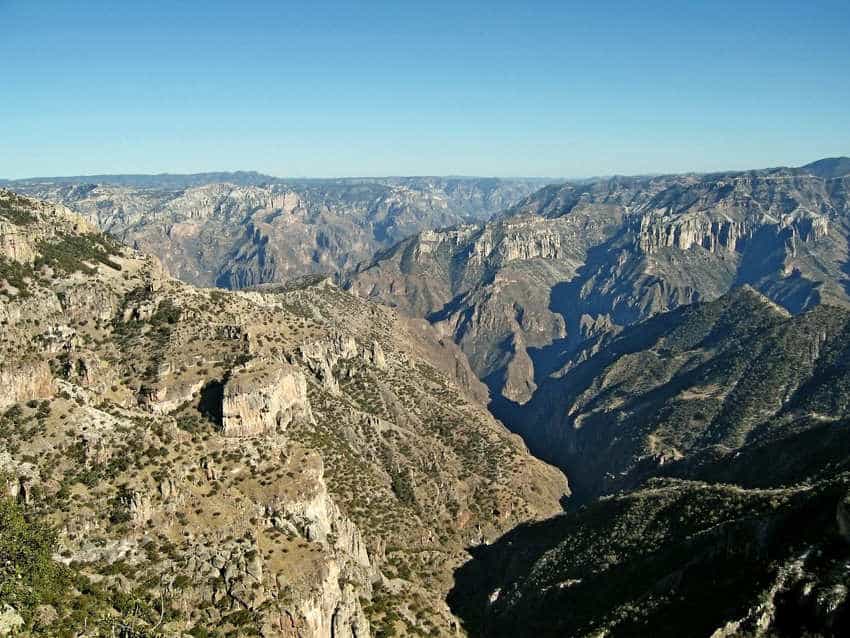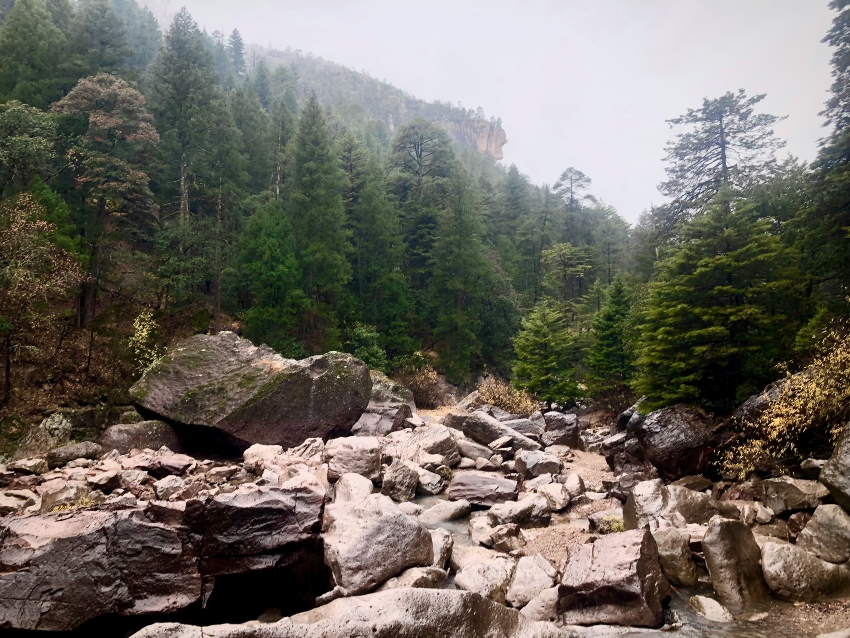Having been a travel writer for the past 15 years, I’ve had the privilege of traveling to over 150 countries and visiting the big hitters — from the pyramids of Giza to the jungle-clad temples of Angkor Wat and the mountaintop ruins of Machu Picchu. While these icons are magnificent, I’ve learned that the real magic of travel isn’t just about ticking off a list. It’s about finding those “wow” moments in places I didn’t expect.
That’s exactly what this new series is all about. Over the next 10 weeks, I’ll be taking you on a journey through my adopted home of Mexico to find the incredible experiences that stand shoulder-to-shoulder with some of the Earth’s most iconic spots. Get ready to venture beyond the well-trodden path and discover a side of Mexico you never knew existed.
Grand Canyon vs Copper Canyon

To kick things off, we’re starting with a showstopper of epic proportions. In the mountains of northern Mexico, the earth cracks open to reveal a dramatic landscape where sheer cliffs plunge into a copper-green abyss, carved deep over millions of years by the rivers that still shape it today.
The sheer scale of it all might remind you of Arizona’s pride and joy, but this is its untamed, lesser-known cousin: Barrancas del Cobre or Copper Canyon. While the Grand Canyon is a global icon, instantly recognizable and visited by millions, the Copper Canyon remains a far more untamed and, if you ask me, more adventurous experience.
The two share a similar origin story, both sculpted over millennia by the forces of water carving through high plateaus. Both boast staggering depths and widths that defy imagination. But that’s about where the similarities end. Think of the Grand Canyon as a perfectly produced Hollywood blockbuster, and the Copper Canyon an indie film — raw, wild and unpredictable.
The blockbuster experience
Don’t get me wrong, the Grand Canyon is popular for good reason. It’s a world wonder, a 277-mile-long spectacle whose layered rock tells a story that stretches back two billion years. For the roughly five million people who visit annually, the experience is often a beautifully managed affair. Paved roads lead you to stunning viewpoints, where you’ll find visitor centers, museums, and the reassuring presence of park rangers.
It’s undeniably beautiful, but its immense popularity means that the experience can sometimes feel a little too curated. While serious hikers can brave its wild heart on multi-day treks (if they snag an overnight permit), most of us see it just from those accessible, well-paved trails along the rim. I often feel like I’m observing a masterpiece from a distance, safely separated from its true, untamed core.
Mexico’s wild frontier
Imagine a canyon system so vast it could swallow the Grand Canyon whole — four times over. Welcome to the Copper Canyon, a network of six interconnected canyons in the heart of the Sierra Madre Occidental. And yet, while Arizona’s marvel welcomes millions, the Barrancas del Cobre see only a tiny fraction of that, leaving this natural attraction largely untouched by mass tourism.

For me, what truly makes the Copper Canyon such a profound place is that it’s still very much alive. It’s home to the Tarahumara (Rarámuri) people, who inhabit the steep slopes of the mountains in simple huts and caves. You might have heard of them – they’re renowned for their superhuman running prowess. Born from a lifetime in this rugged terrain, the Tarahumara can navigate rocky trails for miles on end, effortlessly scaling the steep slopes of the Copper Canyon.
While I was there, I learned about the story of Lorena Ramírez, a young Tarahumara woman who became an international sensation. She won grueling ultramarathons in Europe, not in high-tech gear, but in her traditional flowing skirt and tire-soled huaraches. I highly recommend visiting the Museo de la Cultura Tarahumara in the town of Creel to get the full scoop and learn more about this fascinating culture.
If you want a truly unforgettable experience, mark your calendars for the first weekend of March. That’s when the annual Caballo Blanco Ultramarathon, a brutal 50-mile (80-kilometer) race, takes place in the town of Urique. It’s a humbling, front-row seat to watch the amazing Tarahumara athletes conquer their home turf with impressive grace and speed.
Highlights of Copper Canyon
Copper Canyon is a hikers’ paradise, and hands down one of the best places to explore in Mexico for outdoor lovers. The legendary three-day trek from the old silver mining town of Batopilas to Urique is an epic journey along ancient paths that weave through mango groves and bougainvillea-filled gardens, a world away from the pine-clad rim. You’ll need a good guide and a sturdy pair of legs, but the reward is total immersion in the wilderness.
For those who don’t have time for a multiday trek, my tip is to stay at one of the incredible canyon-rim hotels in Divisadero, like the Hotel Mirador or Hotel Divisadero Barrancas, and do guided, short hikes from there. Picture pulling back the curtains at sunrise and being greeted by the silent, immense expanse of three canyons stretching before you, and then hiking along the rim hearing stories from a Tarahumara guide. It’s a humbling, front-row seat to the canyon’s grandeur that a simple roadside viewpoint just can’t replicate.
Near the Divisadero train station, the Parque de Aventuras Barrancas del Cobre offers a shot of adrenaline for thrillseekers. You can soar across the canyon on one of the world’s longest ziplines or, for a less hair-raising (but no less jaw-dropping) view, glide over the chasm on the aerial tram. Either way, the views are breathtaking!
All aboard El Chepe
But the absolute best way to experience the Copper Canyon is aboard the Ferrocarril Chihuahua al Pacífico, affectionately known as El Chepe. This legendary train journey is an engineering marvel, traversing 37 bridges and 86 tunnels as it winds its way from the coastal city of Los Mochis to the highlands of Chihuahua.
To embark on this incredible journey, you’ll need to get to either Chihuahua City or Los Mochis in the state of Sinaloa further south. Both cities have airports with connections from major cities in Mexico and the United States. I personally prefer to start my journey in the high altitudes of Chihuahua, and then descend towards the warm coastal plains off the Pacific Ocean. It’s a fantastic contrast!
Now you have another choice to make, and this really comes down to your travel style. The Chepe Express is your comfortable, scenic-focused option that runs between Creel and Los Mochis, offering three classes of service: Tourist, Executive, and First Class. The higher classes provide access to a dining car with panoramic windows, a bar, and an open-air terrace for unbeatable views. Book tickets online in advance, especially if you’re planning to travel in the holiday season.
The Chepe Regional, on the other hand, is a more basic, local-bus-on-rails experience that covers a longer route from Chihuahua City to Los Mochis, making more stops along the way. While it’s primarily used by locals, tourists can also ride in the tourist-class car. The Regional can only be booked at the train stations in Los Mochis or Chihuahua. For the full cultural immersion, the Regional is a great bet.
Beyond the viewpoint
The Grand Canyon is, without question, a bucket-list destination. But for travelers who, like me, get a special thrill from earning their experiences, the Copper Canyon offers a different, more profound kind of experience.
Here, you wake up to it from a cliff-edge hotel room, you soar through it on a zipline, and you journey into its very heart aboard a legendary train. A hike isn’t just a walk on a well-trodden path but a rugged passage into a different culture, a different world.

If you’ve stood at the rim of the Grand Canyon and felt that tug, that desire to go deeper and connect with a place on a more human level, then it’s time to pack your bags. Mexico is calling.
Nellie Huang is a professional travel writer and self-proclaimed Mexico-holic. She’s the author of Lonely Planet’s Mexico guidebook and has written hundreds of articles on Mexico for various publications. Read about her adventures worldwide on wildjunket.com and follow her updates on Instagram @wildjunket.




